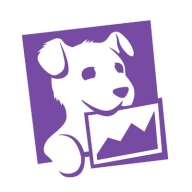

Datadog and Sumo Logic Observability are competing products in the observability space. Datadog generally has the upper hand due to its comprehensive monitoring solutions which appeal to enterprises.
Features: Datadog offers real-time interactive dashboards, seamless integrations, and extensive metrics with multiple integrations for system performance. Sumo Logic Observability provides advanced analytics and log management with detailed insights into application errors, threat detection, and a powerful query language.
Room for Improvement: Datadog could enhance its log analysis and querying capabilities, improve cost transparency, and provide better support for complex deployment environments. Sumo Logic Observability could streamline the initial setup process, enhance user interface intuitiveness, and expand integration options.
Ease of Deployment and Customer Service: Datadog's deployment is straightforward with accessible support options. Sumo Logic Observability, while complex in setup, benefits from responsive support services that assist with any deployment challenges.
Pricing and ROI: Datadog offers a premium pricing model that provides substantial ROI for large-scale operations. Sumo Logic Observability is more cost-effective with lower setup costs, appealing to those seeking value without compromising essential capabilities.
The documentation is adequate, but team members coming into a project could benefit from more guided, interactive tutorials, ideally leveraging real-world data.
There should be a clearer view of the expenses.
The setup cost for Datadog is more than $100.
Our architecture is written in several languages, and one area where Datadog particularly shines is in providing first-class support for a multitude of programming languages.
The technology itself is generally very useful.


Datadog is a comprehensive cloud monitoring platform designed to track performance, availability, and log aggregation for cloud resources like AWS, ECS, and Kubernetes. It offers robust tools for creating dashboards, observing user behavior, alerting, telemetry, security monitoring, and synthetic testing.
Datadog supports full observability across cloud providers and environments, enabling troubleshooting, error detection, and performance analysis to maintain system reliability. It offers detailed visualization of servers, integrates seamlessly with cloud providers like AWS, and provides powerful out-of-the-box dashboards and log analytics. Despite its strengths, users often note the need for better integration with other solutions and improved application-level insights. Common challenges include a complex pricing model, setup difficulties, and navigation issues. Users frequently mention the need for clearer documentation, faster loading times, enhanced error traceability, and better log management.
What are the key features of Datadog?
What benefits and ROI should users look for in reviews?
Datadog is implemented across different industries, from tech companies monitoring cloud applications to finance sectors ensuring transactional systems' performance. E-commerce platforms use Datadog to track and visualize user behavior and system health, while healthcare organizations utilize it for maintaining secure, compliant environments. Every implementation assists teams in customizing monitoring solutions specific to their industry's requirements.
Sumo Logic Observability is widely used for log aggregation, analysis, and SIEM capabilities. It assists in monitoring data, creating dashboards, and managing log storage.
Sumo Logic Observability helps teams with logging in production, debugging with trace IDs, and performing queries across large datasets. Developers leverage centralized logs for error detection and tracking metrics like successful transactions and data volume. Security teams integrate it with SOAR systems for automation and enhanced security investigations.
What are the key features?Industries like finance, healthcare, and technology implement Sumo Logic Observability to monitor sensitive data, manage high transaction volumes, and ensure compliance with regulatory standards. Security and development teams benefit from its robust capabilities, enabling effective collaboration and streamlined operations.
We monitor all Application Performance Monitoring (APM) and Observability reviews to prevent fraudulent reviews and keep review quality high. We do not post reviews by company employees or direct competitors. We validate each review for authenticity via cross-reference with LinkedIn, and personal follow-up with the reviewer when necessary.